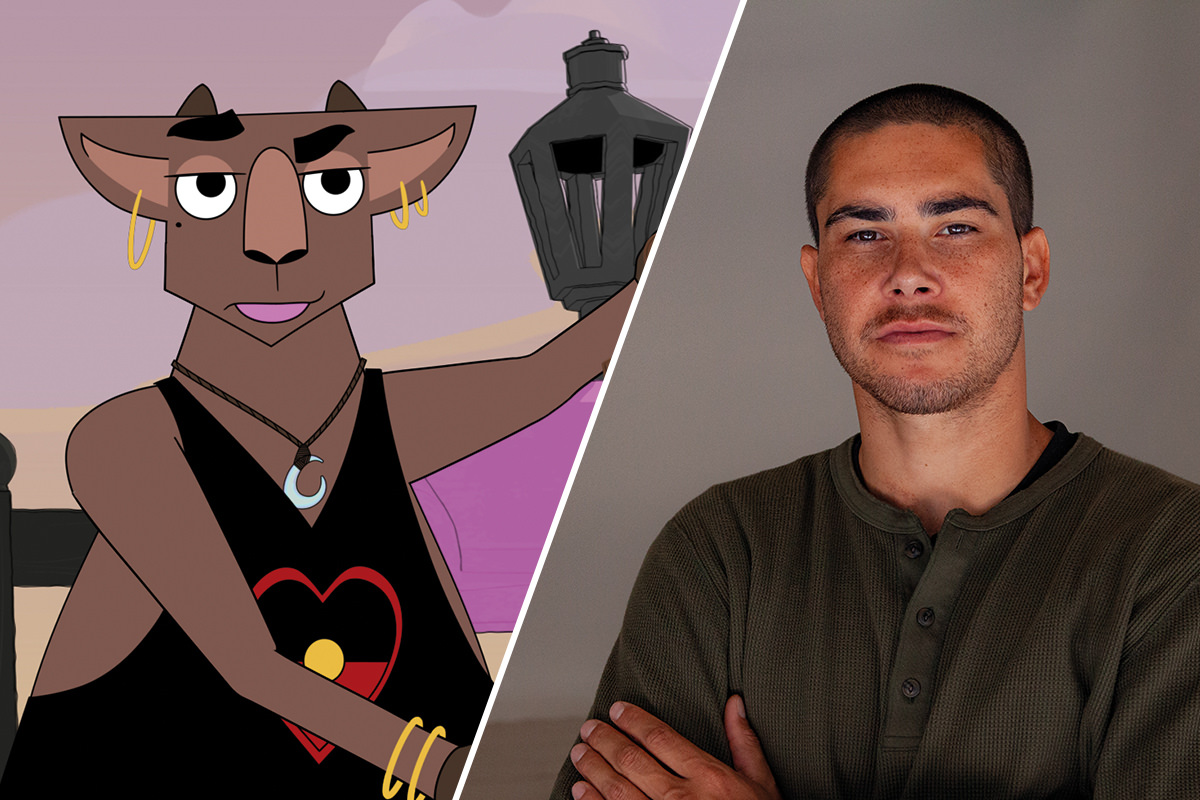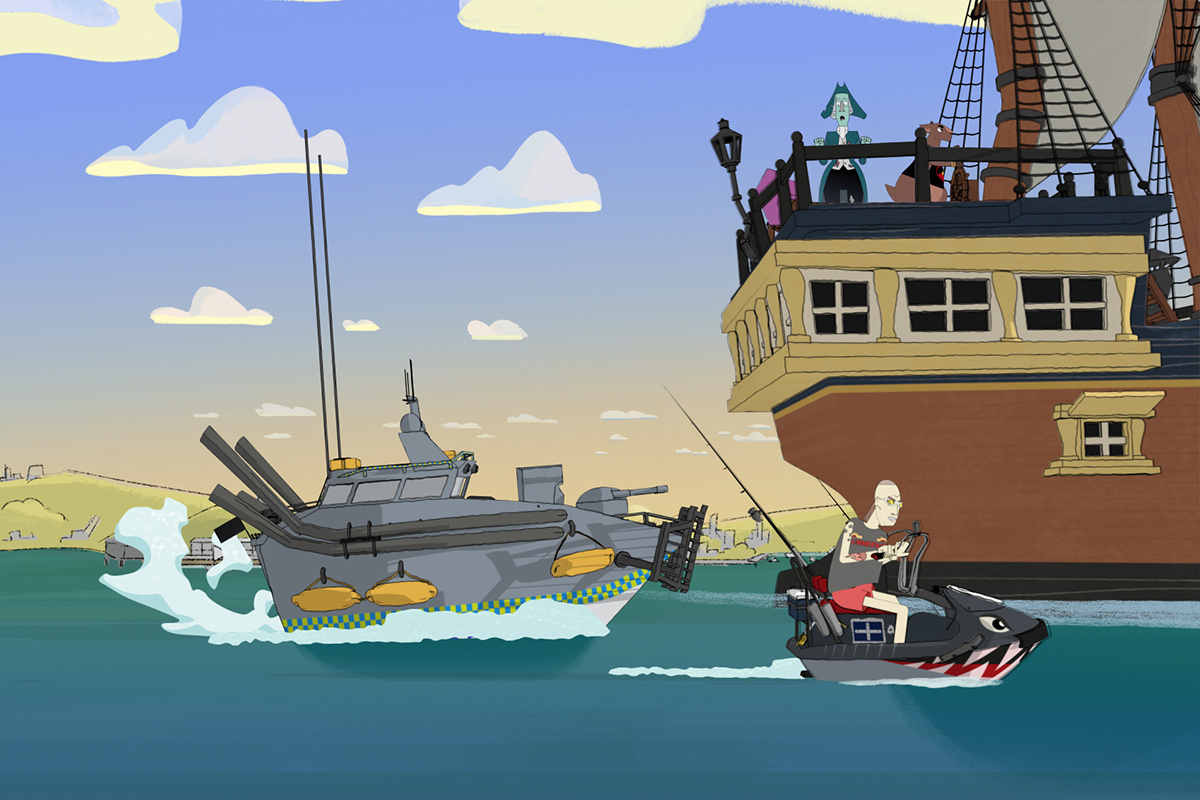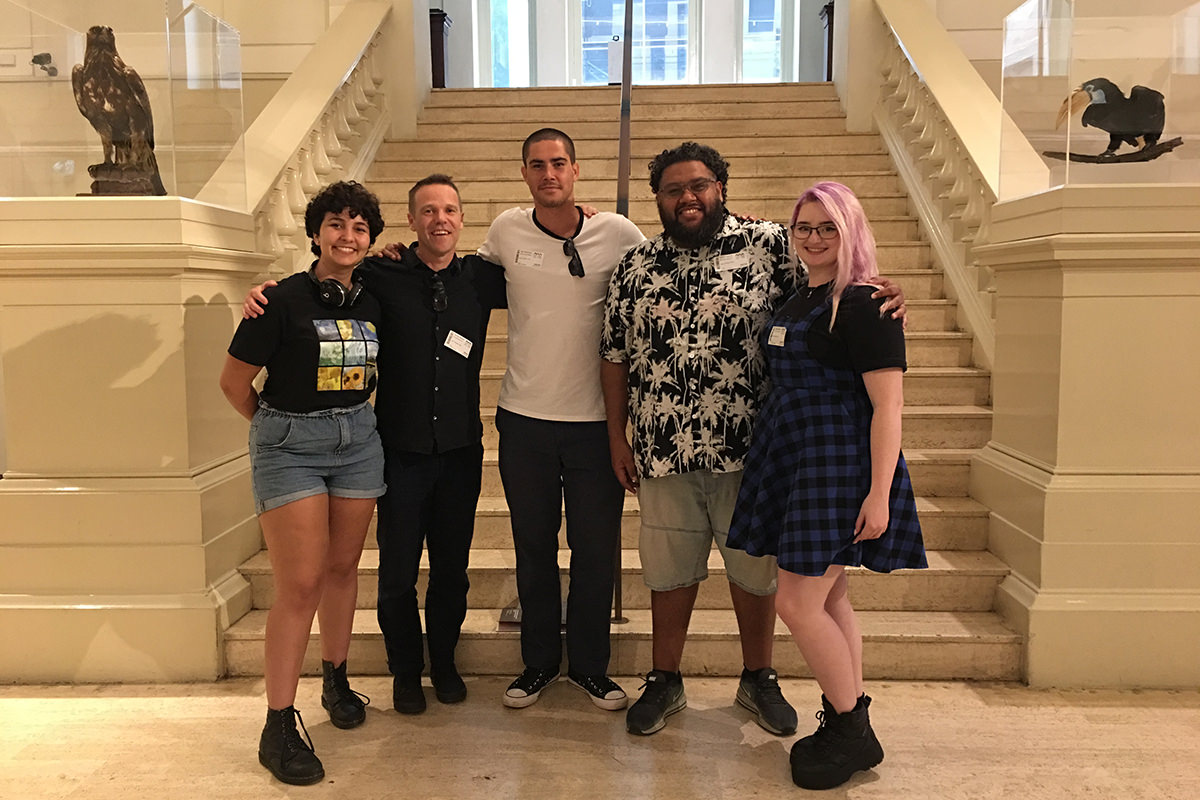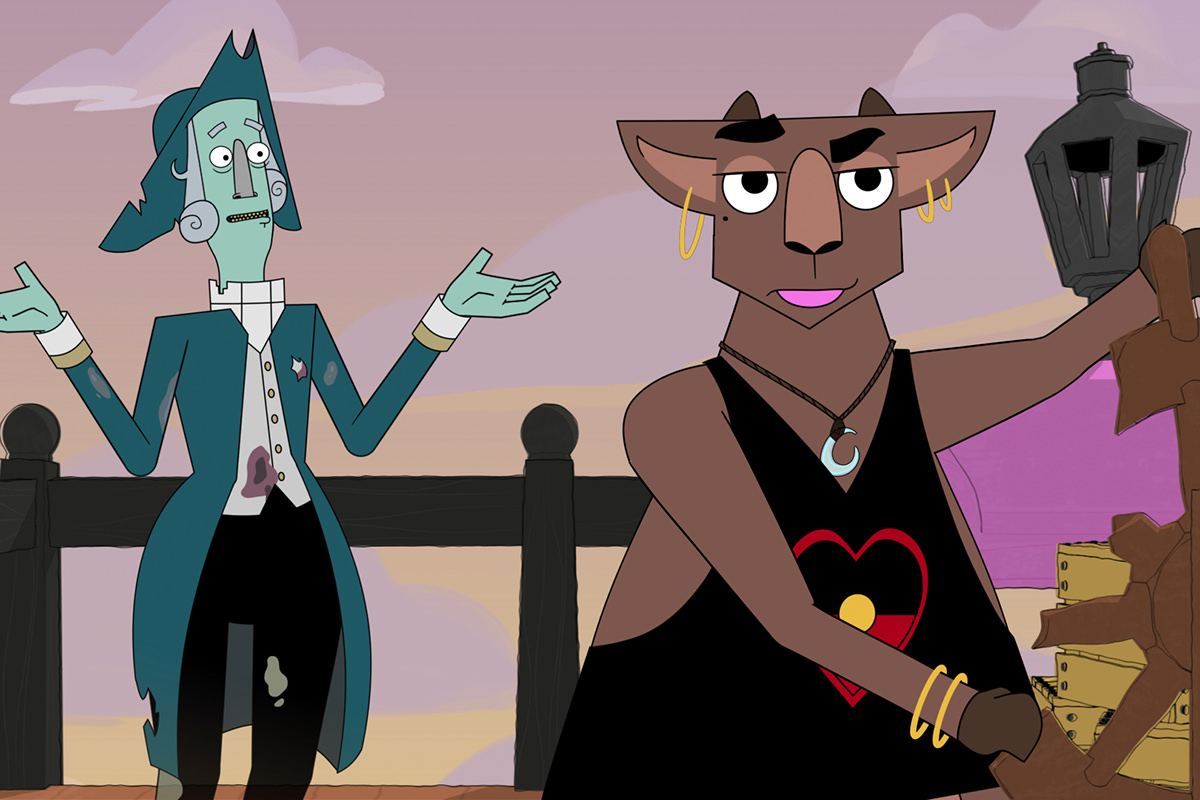Jake Duczynski: amplifying community voices through animation
Cooked co-writer/director Jake Duczynski on his journey from aspiring tattoo artist to now, and his goal to upskill the next generation of First Nations animators.
 Cooked, Jake Duczynski
Cooked, Jake Duczynski
There’s an old saying about life imitating art, but when it came to the digital series Cooked, co-writer and director Jake Duczynski says the parallels were uncanny.
In the five-part animated comedy series (on ABC iview here), the ghost of Captain Cook awakens in 2020 and along with Mahnra, an Indigenous woman's spirit trapped inside the body of a goat, they search for a cure to a mysterious 250-year-old spell.
“In the story, we had an airborne curse,” Duczynski says. “[And] we were sitting there writing, 'let’s pull a statue down' in early March 2020…
“[Then] it was the middle of the pandemic; it was Black Lives Matter; Bristol was pulling statues down; America's pulling statues down; people were guarding our statues here in Sydney. It was trippy. We had our main characters foil the plans of resailing The Endeavour and sure enough, the pandemic foiled the plans of resailing The Endeavour…
“We'd written all of this in a script and so we were like ‘we've got to release’.”
Funding support by then was already in place – from Screen Australia, Create NSW and ABC after initial development funding from the Australian National Maritime Museum. Even then, Duczynski says there were a lot of late nights and working weekends to meet their deadline of 26 January 2021.
For animation, 15 months turnaround might sound like a lot, but he says it was fast.
“I would say the biggest misconception [about animation] is just how long it takes,” he says. “If you're in the screen industry and you come from live action, three or four minutes could be quite achievable at sort of an economic budget, but with animation it takes time. If you're going to draw 24 frames in a second, and you've got 60 seconds, and each frame takes 20 minutes to draw, it's a long time.”
 Cooked
Cooked
But for Duczynski, drawing each frame also offers up a world of possibility.
“You can create and orchestrate the world that you want to see from the ground up,” he says.
It means animation can be a conduit for storytelling, whether that’s for a political piece like Cooked, which is wrapped up in humour to hit home some hard truths, or a cultural project like the Walkley award-winning SBS interactive animation My Grandmother’s Lingo, where he worked with First Nations woman Angelina Joshua, to preserve a dying language.
Duczynski says his animation style will change from project to project, depending on what the story is and where it’s coming from.
“I do quite a lot of work with remote communities and I love to place myself in the community or have artists fly [to Sydney to] develop an aesthetic that's from the area [and] best represents the narrative that we're telling,” he says.
For example, when Duczynski works with a community up in Ngukurr, south-east of Arnhem Land, he will bring local artists into the design process to make sure things are visually represented the right way. Or on the project Remaking the Pathway, he says the team flew the sisters down after filming them on their country. Then the animation team worked with the collective knowledges of an artist, a dancer and a songman to help define the animated content.
“Meaningful consultation with community is paramount. Travelling to community and being on country is best, but sometimes it’s difficult [equipment, software etc] and we have to bring those knowledge keepers and artists into Sydney and create safe workshops where we can sit down together and ask those questions: 'how would you paint this or what colour palette would we use for that? Can we show this shot, next to this shot? Can we show this animal? Because if we can't show this animal because it's someone's totem, or sacred (a spiritual emblem – learn more here), we find it out quite quickly in that meeting,” he says. "Then it’s off the table...
“(It’s) amplifying those artists and musicians and storytellers all together as a community.”
It infuses the projects with an added layer of meaning, but Duczynski acknowledges it can create pressure. On Cooked, one of the biggest challenges was making sure the community they were consulting with were happy.
“We spent a lot of time down with Shayne Williams, down at La Perouse, talking about Gweagal histories… and chatting to Uncle Vic Sims about Bidjigal Country,” he says.
The Cooked team went to museums to make sure they saw first-hand some of the artefacts. They sought to honour the Gweagal fisherwomen with the character of Mahnra, which Duczynski says actually means ‘fisherwoman’.
 The Cooked team at the Australian Museum
The Cooked team at the Australian Museum
“We learnt of these beautiful stories out in Gweagal Country where the women would go out in their Nawis (canoes) at night with their babies, and the fires burning in their canoes. They'd sing in harmony and they'd all float there and fish under the full moon. I just really wanted to make sure that the community that we consulted with and all the incredible Indigenous women that helped me write and shape the character of Mahnra were all on board with what we were doing,” he says.
While animation and illustration now provide Duczynski with an opportunity to elevate these stories, it’s been a “slightly unexpected” journey. The original goal was to be a tattoo artist.
“I had my heart set on doing an apprentice and tattooing all over the world,” he says. Animation and illustration might have remained an “overindulgent hobby” if it weren’t for the support of an uncle who worked at Network Ten and introduced him to the animators there. Commissioned work followed, which helped him realise it was an actual career. He signed up to UTS’ then-new animation course and was on the path to where he is today.
Now he wants to pay it forward and create that pathway for a new generation – a process he’s already started through Cooked.
Duczynski teaches and lectures at UTS and when Cooked began taking shape, he went to the Aurora Education Foundation for help.
“A huge part of Cooked was about getting First Nations perspectives across the whole scope of the production. So because I already had a standing relationship with the emerging artists over at UTS, we went to Aurora and said, 'hey, look, I need to get some paid internships and get young brothers and sisters in here to work on Cooked with us’.”
He says it meant that while they had writers’ rooms with established practitioners like Wayne Blair, Katie Beckett, Megan Wilding, and Pauline Clague, they also had young designers creating characters; young animators dictating how the characters move; 3D artists modelling up animals; and even First Nations composers with rapper and producer Jimblah.
“Just to make sure that this story that we were telling, this perspective on the resailing of The Endeavour and the residual impact of colonisation, was told from multiple perspectives. It's not just my perspective and it's not just my story. It's a story that affects everybody.”
 Cooked
Cooked
Since the success of that experience on Cooked, Duczynski and Cooked producer James Hackett of Studio Hackett have started on a new joint venture (name TBC).
“We're going to start working more collaboratively with institutions like UTS to bring young First Nations artists into the studio and get insights into the industry,” he says.
“But also reach out to communities and get some academic collaborations going between community, universities and production companies to really tell those stories from those voices that don't get heard often and in our industry.”
His advice for young animators wanting to break into the industry, is to choose projects that resonate with you personally.
“It's really finding those stories that you can sit with for a year or two years,” he says.
An example for him was working on My Grandmother’s Lingo in Ngukurr with young First Nations woman Angelina Joshua.
“Her mission was to save her dying language, the native tongue Marra… and to absorb as much language and culture from the three or four remaining elders in the community that she could.”
Together they made an interactive animation where they preserved the Marra language in animated form.
“They put it back in schools and it's spoken in the community again, and for me it was one of those things where that project really resonated with me. My own language has been decimated. The Mandandanji and Gamilaraay languages, there's only a fraction of it left,” he says.
“I could really feel that story and that's the thing that I gravitated to…. [so] tell stories that are truthful. Tell stories that are from the world that you know. Don't tell stories where you don't find meaning.”
Watch Cooked on ABC iview here

What to read next
Questions for writers to ask to get to the heart of characters and create an authentic world.
06 Jul 2021
Kodie Bedford